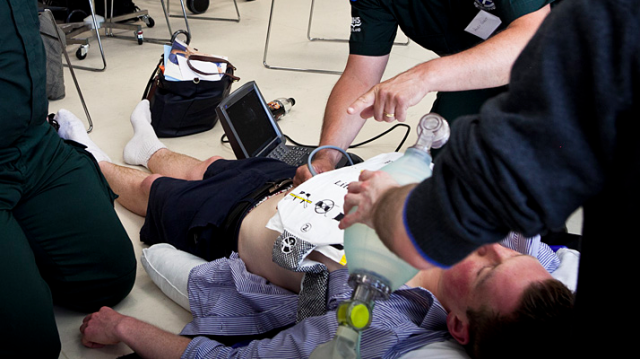
How valuable is the use of point-of-care ultrasound in resuscitation situations? Consider the following case study, provided by Dr. Mark Mensour, ER physician, Assistant Professor at the Northern Ontario (Canada) School of Medicine and course developer for Emergency healthcare practitioners.
A 59-year old male, recently admitted for fever and pneumonia, is intubated and ventilated. While in the CT scanner to determine whether he has acute respiratory distress syndrome, the patient suffers a cardiac arrest with pulseless electrical activity (PEA). CPR was initiated, and the endotracheal tube, found to be occluded with secretions, is replaced 15 minutes into the code.
At this point, there is still only PEA present on the monitor. A portable ultrasound machine is brought in, and a curvilinear probe is applied using a subcostal approach. Cardiac motion is detected with ultrasound, which encourages the resuscitation team to continue with CPR and epinephrine.
At 25 minutes, a fine ventricular fibrillation is noted. One defibrillation at 200 J reveals a subsequent sinus tachycardia with output. The patient ultimately recovers and is discharged from hospital one week later.
Case studies like these highlight the value of point-of-care ultrasound. It’s one of many reasons why FUJIFILM Sonosite is proud to support medical educational initiatives like the Canadian Association of Emergency Physicians’ (CAEP) EDTUx Resuscitation course taking place on June 3rd, 2017 in Vancouver, BC and on December 1, 2017 in Ottawa, ON.
FUJIFILM Sonosite is recognised as the leader in durable, reliable, intuitive point-of-care ultrasound solutions. We are committed to developing and supporting POCUS education programmes around the world.
